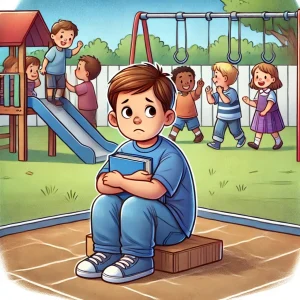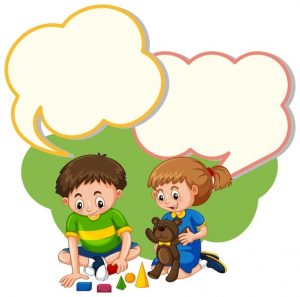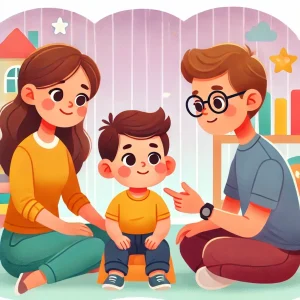DIY Speech Therapy at Home: Effective Tips for Parents
By Wellness Hub
Last Updated: October 25, 2024
Looking for ways to make speech therapy accessible and fun at home?
DIY Speech Therapy at Home empowers parents and caregivers to support their child’s speech and language development through interactive activities and proven techniques. Speech therapy for kids at home doesn’t just enhance communication skills—it fosters a deeper connection between you and your child. In this guide, we’ll explore easy-to-follow strategies that are engaging and effective. With the right tools, a bit of patience, and creativity, you’ll be set to make meaningful progress in your child’s speech journey, right from the comfort of home.
What is DIY Speech Therapy?
DIY speech therapy, or “Do-It-Yourself” speech therapy, is a parent-led approach to helping children overcome speech and language challenges through structured exercises and activities at home. This flexible method allows parents and caregivers to actively participate in their child’s progress, making speech practice an integrated part of the daily routine.
Benefits of DIY Speech Therapy
DIY speech therapy empowers parents and caregivers to tailor exercises to their child’s needs while reducing dependence on clinic-based visits. It offers the following benefits:
- Cost-effective: Unlike traditional speech therapy, DIY sessions are often more affordable, as they reduce travel expenses and appointment fees.
- Convenience: DIY speech therapy can be conducted at a time and place that works best for the family, allowing parents to fit sessions around their schedule.
- Increased Parental Involvement: Engaging parents in hands-on exercises encourages bonding and improves the likelihood of consistency and motivation.
- Familiar Environment: Conducting therapy at home provides children with a comfortable, stress-free setting that may make them more receptive to learning and practice.
Also Read: Speech Therapy at Home: Key Tips Every Parent Should Know
Comparison to Traditional Speech Therapy
While traditional speech therapy with a certified therapist offers expert guidance and individualized programs, DIY speech therapy gives parents an active role and flexibility to support their child’s language development daily. Both methods are effective, but a combination of professional support and home-based practice often yields the best results.
Starting speech therapy at home can be an empowering step for parents eager to support their child’s communication journey. Many parents wonder, “Can I do speech therapy at home?” The good news is, home-based speech therapy for kids offers practical methods that can be effective for many speech and language delays. With a few essential techniques, parents can provide meaningful support that complements professional guidance. However, knowing when to seek a therapist’s expertise is crucial. In this guide, you’ll discover who benefits most from DIY methods, along with tips on when it’s best to consult a professional.
Essential Tools for DIY Speech Therapy
Equipping yourself with the right tools can make a significant difference in your child’s speech therapy at home. Here are some essential tools every parent and caregiver should consider to help their child make progress effectively.
1. Visual Aids
Visual aids provide a powerful way to reinforce speech and language skills. They help children visualize sounds, words, and concepts, making learning more tangible and engaging. You can use picture cards, storyboards, and illustrated charts as visual cues to help your child understand and practice new words. Using these aids consistently creates a familiar learning structure, helping children feel more confident as they progress.
2. Flashcards
These are a classic yet highly effective tool for speech therapy. Flashcards for sounds, words, or phrases allow you to introduce vocabulary in a structured, repetitive manner. Whether you’re focusing on simple words or specific sounds, flashcards make it easy to practice targeted skills and track progress. Many printable flashcard sets are available online, or you can even create your own tailored to your child’s interests.
3. Speech Therapy Tools for Home
Creating a speech-friendly environment at home can be easy with the right resources. Look into interactive games, picture books, and apps that provide speech therapy activities. One highly recommended app is BASICS: Speech & Social Skills, recognized by Google as the Best App For Good. This app combines speech exercises with social skill-building activities, allowing children to practice communication skills in a playful setting. Its easy-to-use interface and activity variety make it ideal for integrating speech therapy into daily routines.
Recommended Speech Therapy Materials
- Mirror: Practicing in front of a mirror helps children see how sounds are formed with the mouth and lips.
- Storybooks with Repetitive Phrasing: Books that repeat phrases encourage children to join in, reinforcing speech patterns.
- Sound Cards: Cards focusing on specific sounds make it easy for children to practice correct pronunciation.
- Interactive Apps: Alongside BASICS, explore other speech therapy apps designed for children to practice sounds, words, and sentences in an engaging format.
With the right speech therapy materials and tools, parents and caregivers can create a productive, supportive environment at home. Visual aids, flashcards, and carefully chosen resources can turn speech therapy into an enjoyable and effective experience for children. a practical and rewarding experience for both parents and children.
DIY Speech Therapy Techniques for Different Age Groups
Helping children develop strong language skills from a young age can create a solid foundation for communication as they grow. Here are some targeted DIY speech therapy techniques tailored to each age group. These at-home practices will not only enhance language skills but also foster an enjoyable learning environment.
Speech Therapy for Toddlers (Ages 1-3)
For toddlers, speech therapy at home focuses on building basic sounds and words. At this stage, children begin to form their first sounds and simple phrases. Through engaging activities, you can help them grasp essential speech and language foundations.
- Practice Basic Sounds: Start with repetitive sounds like “ma-ma” or “ba-ba.” Make it a fun game by saying the sounds in different tones, encouraging them to mimic you.
- Introduce Simple Words: Use everyday objects, like “cup” or “car,” to introduce basic words. Hold the item, say its name slowly, and encourage them to repeat it.
- Incorporate Gestures: Pairing words with gestures helps toddlers connect meaning with actions. For example, wave while saying “bye-bye” to teach the concept of farewells.
By using these simple yet effective speech exercises for toddlers, parents and caregivers can support early speech development at home, setting the foundation for more complex language skills.
Speech Therapy for Preschoolers (Ages 3-5)
As children progress into the preschool years, their language abilities expand rapidly. This age group benefits from more structured activities that introduce rhythm, storytelling, and sound patterns.
- Rhyming Games: Engage your preschooler with rhyming games to develop phonological awareness. Try words like “cat” and “hat” or “bat” and “sat.” Ask them to match similar-sounding words or make rhyming pairs.
- Story Reading: Reading short stories together helps build vocabulary and introduces new sounds. Pause to ask them questions about the story to develop comprehension and encourage verbal expression.
- Follow Directions: Make a game out of simple instructions, such as “clap your hands” or “touch your nose.” This exercise strengthens their listening skills and helps them respond appropriately to spoken language.
These preschool speech therapy exercises offer a fun and educational way to strengthen language skills, preparing them for complex language challenges.
Speech Therapy for Kids (Ages 5+)
For older children, DIY speech therapy activities can help refine pronunciation, enrich vocabulary, and enhance storytelling abilities. At this stage, speech therapy at home can be structured to challenge and engage them further.
- Pronunciation Practice: Focus on specific sounds or letters they might struggle with, like “r” or “s.” Practice these sounds in front of a mirror to help them see how their mouth moves when forming the sound.
- Storytelling Activities: Encourage them to create and narrate their own stories. This exercise not only enhances language but also builds creativity and sequencing skills, both vital for effective communication.
- Vocabulary Building Games: Use flashcards or daily objects to introduce new words. To make it interactive, you can play a word association game where they come up with words that relate to a chosen topic, like “ocean” or “school.”
Read More: Best Speech Therapy at Home Exercises for Different Age Groups
Step-by-Step DIY Speech Therapy Activities for Parents and Caregivers
Engaging in speech therapy at home can be empowering and highly effective for supporting your child’s communication development. Here’s a structured, step-by-step guide to some of the best DIY speech therapy activities. Each activity has been tailored to focus on specific speech skills, making it easier to address individual needs in a fun, engaging way.
| Activity | Purpose | Instructions |
|---|---|---|
| Modeling and Repetition | Sound practice | Model correct pronunciation by saying each sound clearly and encouraging your child to repeat it. Start with simple sounds, progressing to syllables and full words. |
| Flashcards and Word Games | Vocabulary building | Use flashcards with pictures and words. Introduce new words, ask your child to identify images, and play memory games with the cards. This helps reinforce word recognition. |
| Reading Aloud | Fluency and comprehension | Choose books appropriate for your child’s age. Read slowly, using expressive tones, and encourage your child to follow along, improving fluency and listening comprehension. |
| Using Visual Aids | Articulation and clarity | Use images, charts, or even mirrors to help your child see how sounds are made. Visual cues enhance understanding and improve articulation for clearer speech. |
Common Challenges and How to Overcome Them
DIY speech therapy can be rewarding but isn’t without its challenges. Many parents face hurdles with consistency, attention span, and keeping their child motivated. Here’s how to tackle these common obstacles effectively:
- Consistency
Set a simple routine and stick to it. Even short, daily sessions—5-10 minutes—can boost progress. Try linking speech exercises with other daily activities, like mealtime or playtime, to reinforce speech goals naturally. - Attention Span
Kids often struggle to focus. Keep activities fun and brief, changing them every few minutes. Use visual aids and interactive games to maintain engagement, adapting to your child’s interests to keep them involved. - Motivation
Celebrate small wins! Use positive reinforcement, like praise or a sticker chart, to encourage progress. Variety in activities, like mixing games with hands-on exercises, can keep motivation high and make learning enjoyable.
Final Tip: Remember, overcoming challenges in DIY speech therapy takes patience. Stay positive, adapt as needed, and celebrate each step forward.
When to Seek Professional Help
While DIY speech therapy exercises can effectively support your child’s speech and language development, some signs indicate when professional guidance might be essential. If your child struggles to make consistent progress or shows signs of frustration, it may suggest that DIY methods alone aren’t enough. Other indicators include difficulty in understanding or producing specific sounds, limited vocabulary growth, or challenges with following directions. Observing these signs warrants a closer look into professional speech therapy services.
Professional speech therapists provide structured, targeted intervention that DIY activities may not fully address. Consider professional speech therapy vs. DIY as a balanced approach—knowing when to seek speech therapy help can make a significant difference in your child’s growth journey. With expert support, you can ensure that any speech challenges are addressed thoroughly, reinforcing the benefits of your at-home efforts.
Conclusion
Embarking on DIY speech therapy at home is a valuable way to support your child’s speech and language development. Simple daily activities can reinforce skills and build confidence, paving the way for lasting progress. Remember, every small step matters, and your dedication can make a difference.
For more resources or to explore a personalized plan with a speech therapist, consider scheduling a free consultation. Professional guidance, paired with your efforts at home, can unlock the full potential of your child’s communication abilities.
Frequently Asked Questions
1. What is DIY Speech Therapy at Home?
DIY speech therapy at home involves parents and caregivers using structured activities and exercises to support their child’s speech and language development without needing formal therapy sessions.
2. Can I Do Speech Therapy at Home for My Child?
Yes, parents can practice speech therapy at home with effective tools and guidance. However, certain cases may still require professional assessment.
3. What Are the Best DIY Speech Therapy Techniques for Toddlers?
DIY speech therapy techniques for toddlers include modeling sounds, using flashcards, and engaging in simple, repetitive word games to support basic language development.
4. How Effective is At-Home Speech Therapy for Speech Delay?
At-home speech therapy can be effective for mild speech delays, especially with consistent practice and interactive language-building exercises. Severe cases may need professional intervention.
5. What Tools Do I Need for DIY Speech Therapy?
Essential tools for DIY speech therapy include flashcards, picture books, visual aids, and interactive games designed to improve articulation and vocabulary.
6. How Often Should I Practice DIY Speech Therapy with My Child?
Ideally, DIY speech therapy exercises should be practiced daily or multiple times a week. Short, consistent sessions tend to yield the best results.
7. When Should I Seek Professional Speech Therapy Instead of DIY?
If you notice persistent speech delays or limited progress with at-home methods, consulting a speech therapist can provide specialized support tailored to your child’s needs.
8. Are There Specific DIY Speech Therapy Activities for Older Kids?
Yes, speech therapy activities for older kids may involve pronunciation drills, storytelling, reading comprehension exercises, and vocabulary-building games.
9. Can DIY Speech Therapy Help with Autism?
DIY speech therapy techniques for children with autism can be beneficial in building language skills, though it’s often most effective when combined with guidance from a speech therapist.
10. What Are Some Common Mistakes in DIY Speech Therapy at Home?
Common DIY speech therapy mistakes include inconsistent practice, setting unrealistic expectations, and not adapting activities to the child’s interest or age level.
About the Author:
Rajini Darugupally
M.Sc., Speech-Language Pathologist (9+ years of experience)
Rajini is a passionate and dedicated Speech-Language Pathologist with over 9+ years of experience, specializing in both developmental speech and language disorders in children and rehabilitation in adults. Driven by a desire to empower each individual to find their voice, Rajini brings a wealth of experience and a warm, genuine approach to therapy. Currently, at Wellness Hub, she thrives in a team environment that values innovation, compassion, and achieving results for their clients.
Book your Free Consultation Today
Parent/Caregiver Info:
Client’s Details:
* Error Message









